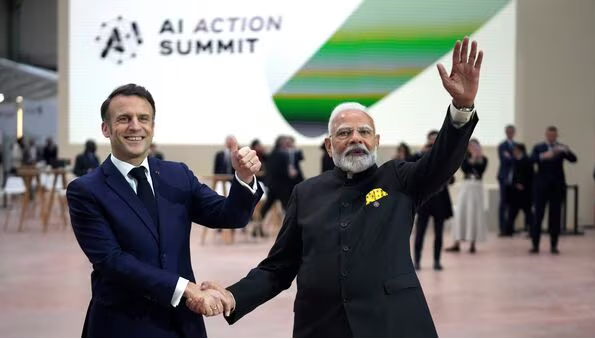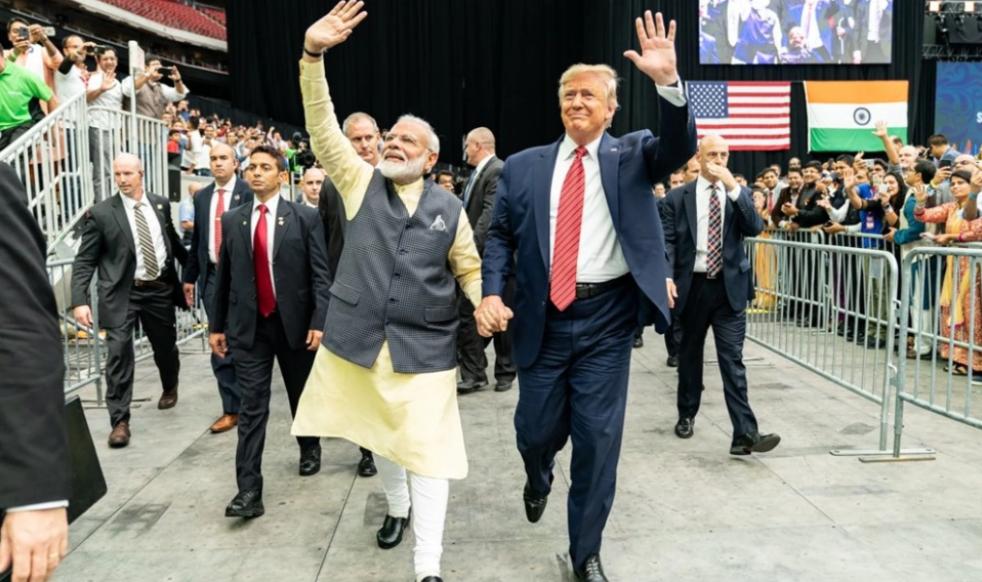Prime Minister Narendra Modi’s upcoming visit to the United States on February 12-13, 2025, comes at a pivotal moment in global geopolitics. Against the backdrop of a shifting U.S.-China relationship, the visit seeks to reaffirm India’s strategic partnership with Washington while addressing key trade, defense, and technological issues. This marks Modi’s first official meeting with U.S. President Donald Trump since his re-election, offering an opportunity to recalibrate bilateral relations in light of new global challenges.
Key Agenda Items
1. Trade and Economic Cooperation
One of the central themes of the visit will be trade negotiations aimed at reducing India’s $35 billion trade surplus with the United States. New Delhi has already taken steps to lower tariffs on select American goods, including motorcycles and agricultural products, in anticipation of potential U.S. trade policies. Trump’s stance on tariffs remains unpredictable, but India is hoping that its recent concessions—such as reducing import duties on motorcycles from 50% to 30%—will soften Washington’s position on trade restrictions.
Additionally, India has increased its purchases of U.S. energy resources, particularly liquefied natural gas and crude oil, to further balance trade relations. These efforts align with New Delhi’s goal of diversifying its energy sources and reducing reliance on Middle Eastern suppliers.
2. Defense and Strategic Technology Partnerships
With growing security concerns in the Indo-Pacific, Modi and Trump are expected to discuss deeper defense collaboration. India has shown interest in acquiring U.S.-made fighter jets and drones, strengthening military interoperability between the two nations. This partnership is further fueled by shared concerns over China’s increasing military assertiveness in the region.
The U.S. has historically supported India in border disputes with China, particularly during the 2020 Himalayan clashes. Modi’s visit is likely to emphasize the importance of continued military intelligence sharing, joint exercises, and increased technology transfers in critical defense sectors. Washington sees India as a key partner in countering China’s influence, and Modi’s discussions with American officials will aim to leverage this geopolitical alignment.
3. Immigration and Skilled Workforce Issues
Immigration remains a sensitive issue, with Trump’s administration taking a hardline stance on undocumented migration while simultaneously recognizing the need for high-skilled workers. India, the largest recipient of H-1B visas, is expected to push for smoother visa policies to ensure a steady flow of skilled professionals to the U.S. At the same time, New Delhi may need to negotiate terms for repatriation of undocumented Indian immigrants residing in the U.S.
4. Energy and Nuclear Cooperation
Another major discussion point will be nuclear energy cooperation. The U.S. has long encouraged India to amend its nuclear liability laws to attract private sector investment in nuclear power projects. Modi’s visit may lead to progress in this area, particularly as India looks to expand its clean energy initiatives and reduce dependence on coal.
5. Meetings with Business Leaders
Beyond government talks, Modi is expected to engage with top American business leaders, including Tesla CEO Elon Musk. These meetings will focus on investment opportunities in India’s rapidly growing technology and electric vehicle sectors.
The Broader Strategic Context
While Modi’s visit is officially framed around economic and security cooperation, a dominant underlying theme is the U.S.-China dynamic. Washington has increasingly turned to India as a counterweight to Beijing’s economic and military rise. Recent U.S. restrictions on technology exports to China, coupled with China’s retaliatory restrictions on critical minerals, have pushed India and the U.S. closer together in supply chain realignment efforts.
As part of the broader Indo-Pacific strategy, the U.S. is expected to gently encourage India to take a more proactive role within the Quadrilateral Security Dialogue (Quad), alongside Japan and Australia. India has historically been cautious about fully aligning with U.S.-led security initiatives, preferring strategic autonomy. However, China’s growing assertiveness in the region may prompt a shift in New Delhi’s position.
Balancing Geopolitical Expectations
Despite a generally positive outlook on U.S.-India relations, trade disputes remain an area of friction. Trump’s protectionist policies have previously led to tariffs on Indian goods, and there is concern that his administration may once again take a tough stance on trade imbalances. However, India is betting on its deepening strategic ties with the U.S. to navigate these challenges diplomatically.
Modi’s personal rapport with Trump—built during Trump’s first term—will play a crucial role in ensuring that India’s concerns are heard at the highest levels. While past U.S. administrations have maintained a strong bipartisan consensus on strengthening India ties, the second Trump administration’s policy direction remains a key variable.
Modi is travelling to USA from France. During his visit to France, Prime Minister Narendra Modi co-chaired the AI Action Summit with President Emmanuel Macron in Paris, emphasizing India's commitment to developing artificial intelligence in a safe, responsible, and inclusive manner. He also inaugurated India’s first consulate in Marseille, strengthening diplomatic ties between the two nations. Additionally, Modi and Macron paid tribute to Indian soldiers who fought in World War I at the Mazargues War Cemetery.

The visit saw the announcement of enhanced civil nuclear cooperation, including potential collaborations on small modular reactors, and the launch of the India-France Triangular Development Cooperation initiative. Furthermore, both leaders declared 2026 as the India-France Innovation Year, highlighting their commitment to technological collaboration and economic partnership.
Prime Minister Modi’s visit to Washington represents more than just a diplomatic exchange; it is a crucial step in shaping the next phase of the U.S.-India partnership. As global power dynamics shift, India’s strategic value to the U.S. has never been higher. By addressing trade, defense, technology, and immigration concerns, this visit aims to solidify India’s position as a key U.S. ally in an increasingly complex geopolitical landscape. The outcome of these talks will not only define bilateral ties in the coming years but also influence broader global alignments in the Indo-Pacific region.

 272 Views
272 Views 0 comments
0 comments
Comments